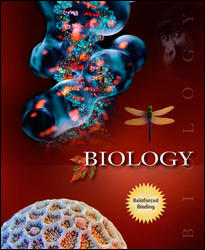 
Biology, Eighth Edition (Raven)Chapter 10:
How Cells DivideLearning OutcomesChapter 10
- Discuss the molecular composition of eukaryotic chromosomes and their association with RNA, histones, and nucleosomes.
- Describe the structure of a condensed eukaryotic chromosome and identify the structure that most accurately indicates the number of chromosomes present in a given cell.
- Understand the differences between heterochromatin and euchromatin.
- Understand the genetic composition of individual eukaryotic chromosomes, chromosome pairs, and sex chromosomes.
- Identify the five phases of the cell cycle and describe the events that highlight each stage.
- Identify the four stages of mitosis and describe the most characteristic events of each stage.
- Understand the composition and function(s) of the spindle apparatus.
- Understand the purpose of mitosis in terms of the genetic composition of progeny cells and the survival of a given cell line.
- Explain how mitosis differs in plant and animal cells.
- Describe the process of cytokinesis in both animals and plants.
- Understand how cyclin-dependent kinases and cyclins control the cell cycle normally and in cancer.
- Identify several growth factors and describe how they affect cell division.
 |  |
|





